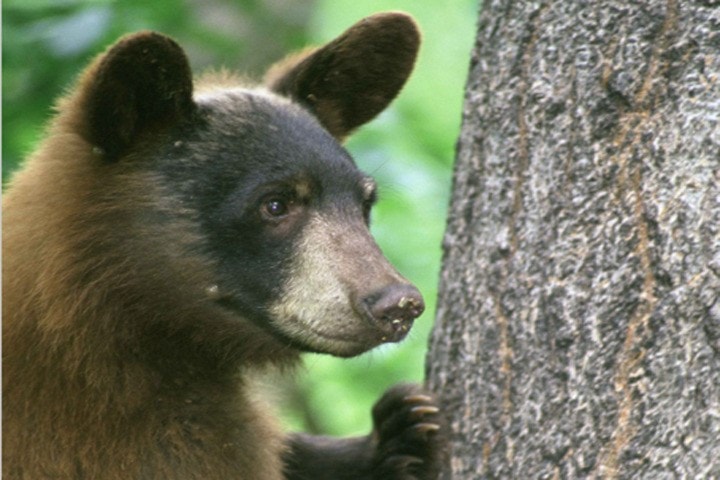Bears are taking a back seat when it comes to encounters with humans this year.
And to reflect that philosophic change, the program once known as Bear Aware has been changed to WildsafeBC.
Modelled on Bear Aware—which has been around since 1999—the program has expanded its scope to cover more than just the wayward bruins in its purview.
Cougars, coyotes and deer have been added to bears as animals to be concerned about under the new provincial program, said WildSafeBC coordinator for Rossland, Sharon Wieder.
“What we were discovering over the last several years was there were more animals coming into urban areas and coming into conflict with people than just bears,” she said.
So a decision was made to add more animals to the list, and change the philosophy to one of keeping wildlife wild and keeping communities safe.
The message is slightly different, she said, with a look for a balance to keep animals wild and keep people safe, getting people to focus on where they live, work and play.
If communities are educated as to how to live responsibly with wildlife the number of conflicts can be reduced, as will the number of bears that have to be destroyed because of conflict.
Over the life of the Bear Aware program the annual number of bears being destroyed in B.C. dropped from approximately 1,000 a year to about 500 a year. Last year in Rossland there were four bears destroyed, down from the 16 shot in 2010.
“In our area (the problem) is still predominately bears, but the increase of cougars and coyotes in the last couple of years shows either a change in our behaviour, or a change in the population of the animals, or a combination of both,” Wieder noted.
There are new pages on the website (www.wildsafebc.com ) that talk about the four animals, with each individual animal having its own information as to how to avoid conflicts.
“We are just trying to get people to focus on their own safety around the animals but also how they can minimize their impacts on animals in the wild,” Wieder said.
The new program covers the broader spectrum of animals with a similar approach as Bear Aware plus a few new features. One is the Wildlife Alert Reporting program, an interactive map people can look at and see where wildlife are being reported, and what type.
People can register and put their own sightings on the map, which is updated twice per week (eventually it will be live).
“I'm still trying to get people to realize this is a way of helping the animals by letting us know where they are,” Weider said.
If sightings are reported and a cluster develops, Weider and conservation officers can then investigate. It's not the case that they see a bear and will go kill it, she explained, but they can then move in and find out of there are human behaviours that need amending.
The new website also includes tips for avoiding animal conflicts in the backcountry.
“The focus is getting away from what people do not only at home but when they are out in the backcountry, and when they are at work as well,” Wieder said.
Visit the new WildSafeBC website and see the new Wildlife Alert and Reporting Program map that shows where animals have been sighted at www.wildsafebc.com/WARP.
editor@rosslandnews.com
